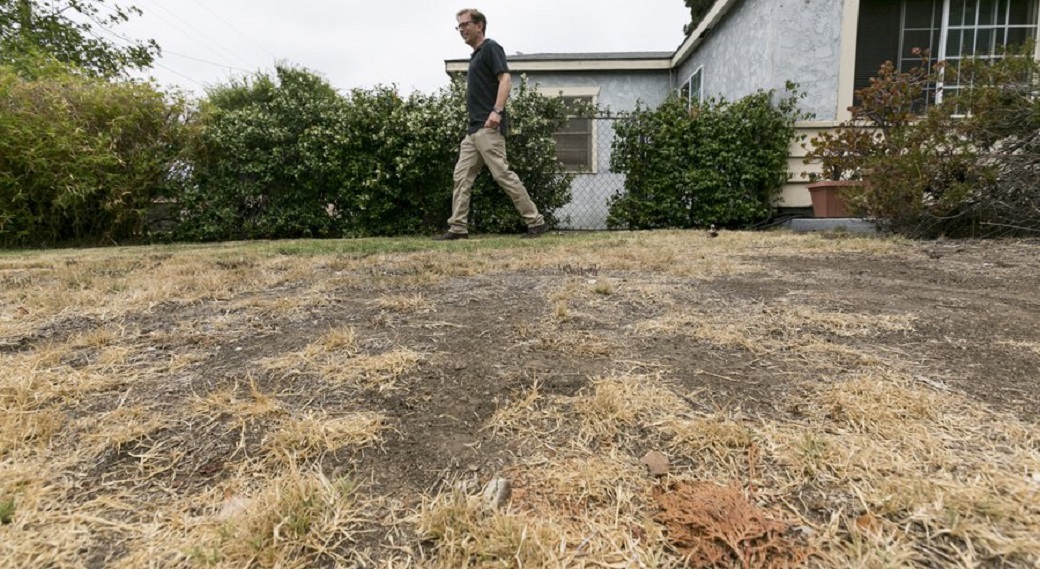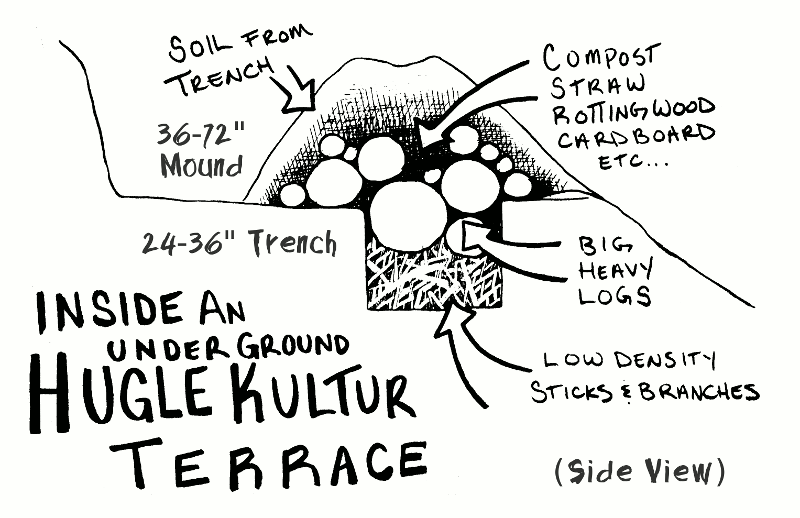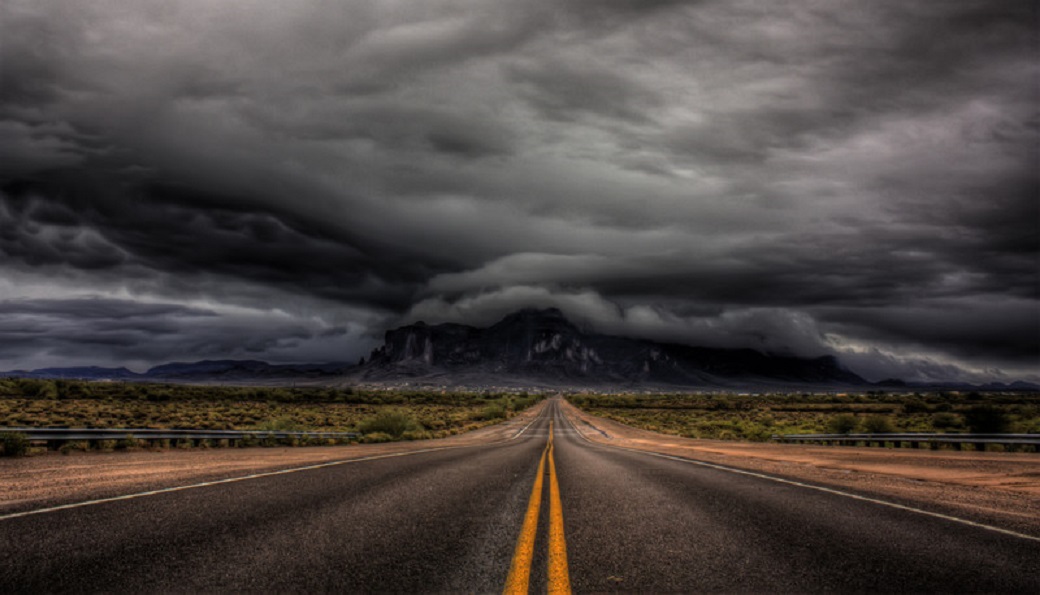by Tasha Greer at Grow Your Own Groceries
A joint task force of experts from the UK and US have recently released recommendations for Extreme Weather and Resilience of the Global Food System. The report uses current climate and weather science coupled with food supply history to make predictions and recommendations to help governments mitigate the societal consequences of food price shocks.
The release of this report is almost ominous in relevance. As drought-stricken Californians and Australians brace for what is shaping up to be one of the most severe El Nino weather weather events in recent history, Section 1 of the report states “[i]n 2007/8, a small weather-related production shock, coupled with historically low stock-to-use levels, led to rapid food price inflation…”. The source of the small weather-related production shock was El Nino conditions in 2007 that caused severe drought in Australia, reduced Australian wheat production by more than half, and exploded wheat prices around the globe.
As we prepare for more El Nino related extreme weather events, the report confirms that we are still at risk for “shocks” to our food supply and prices. In fact, they may be more common and more detrimental in the future. Additionally, the report suggests that if corrective action is not taken, the consequences could cause more civil unrest like the “Arab Spring” of 2010.
While policy makers are still trying to understand the issues, home growers intuitively know that extreme weather events impact food production. We’re not dealing in abstract ‘what-if’ scenarios and distant financial markets, we’re facing the realities of planning and planting our gardens in uncertain and extreme weather conditions right now. Like governments at the global level, home growers also need to meet the challenges through positive action rather than unprepared reaction. Surprisingly, the advice offered in this report also provides good guidelines for us. Let’s take a closer look at the recommendations and see how they can be applied to our home gardens.
Recommendation 1 – Better Understand the Risks
The report highlights concerns over increased droughts and floods. Most climate scientists expect dry areas to get drier, and wet areas to get wetter. Additionally, the intensity of weather events is increasing – droughts are lasting longer, rain is heavier, heat waves are hotter, etc. Overall, weather is becoming more volatile. Growers need to be prepared for lots of record-breaking weather and growing conditions they may not have experienced before.
While weather volatility is the greatest risk to seasonal crops now, long-term considerations should include overall climate change for your region. For example, if you want to plant fruit trees in coastal areas that are threatened by rising sea levels and increased storm intensity, you may need to plan for long periods of standing water. Using knowledge about potential changes in climate, a grower can minimize risks by selecting trees that can tolerate “wet feet” like elderberry. Before making any long-term planting decisions, it makes sense to spend a little time researching specific climate impacts in your region.
An often overlooked risk is the increasing amount of carbon dioxide (CO2) in the air, and its impacts on plant growth. Although opinions vary on whether increased CO2 benefits or inhibits plant growth, it can be a concern either way. If CO2 benefits plant growth, then plants are likely to have more vegetation, and we will need to plan accordingly for plant spacing and nutrient requirements. For foods like lettuce, more vegetative growth can be a boon. However, for plants grown for their fruits – like grapes – excess vegetation might necessitate additional hours spent pruning. There is also a significant body of data that suggest increasing CO2 lowers plant absorption of nitrogen and reduces yields. Nitrogen deficient plants are also more susceptible to pests and diseases. There may be no clear answer on this subject yet, but growers should be aware of the potential risks and use their own powers of observation to adjust planting space, plant varieties, pest and disease management plans, and pruning schedules as necessary.
Regardless of your climate region, we are all gardening in the midst of radical environmental changes and even the most comprehensive scientific models can’t tell us exactly what the future will bring. Yet, a little time spent observing actual changes to and challenges in your garden will go a long way toward helping you identify and account for your risks.
Recommendation 2 – Explore Opportunities for Coordinated Risk Management
It’s one thing to know the risks and another to do something about them. This is where governments often get bogged down trying to chart the best course of action through competing interest groups. Home growers have a real advantage here in that we can act now (with respect for our local ordinances) to turn our risks into rock solid gardening practices. And the best part is, we don’t have to do it alone.
The [Grow] Network is one very useful forum for sharing our gardening struggles, successes, and acquired knowledge about adapting to our evolving environment. Your local Extension Office is also a good place to stay current on trends and learn about opportunities to connect with other growers, or update your skills in particular areas. In the US, to locate the office near you go to the USDA’s Partners and Extensions map and click on your state.
Whether it is through the [Grow] Network, other online resources, or a local gardening club in your area; by observing, researching, and sharing struggles and successful responses to new gardening challenges, we can help each other make quick adjustments and avert risks before they impact our home food production.
Recommendation 3 – Improve the Functioning of International Markets
This recommendation relates to governments setting policies on flexible international responses when food price shocks become likely. For instance, countries that produce biofuel from corn might make a commitment to sell that corn as animal feed when corn crops fail in multiple countries in a single year. Or, countries might agree to store food staples in good years and use them in bad years to stabilize supply. In other words, it is about acknowledging that we are all connected through global markets and having a good contingency plan to keep things from getting crazy when extreme weather impacts food production.
It may seem like a stretch to correlate this idea to our gardens, but in fact every garden – big or small – is an incredibly complex integrated system, responsive to outside forces just like an international market is. As our ecosystems change, there will be “shocks” no matter how good of a gardener you are. Gardens designed with this in mind will respond better to the challenges.
A lot of page time has been devoted to the benefits of mulch – what to use, how much, when, etc. Similarly there are tons of recommendations on bed-types – raised beds, hugelkultur, swales on contour, straw bales, etc. For all of the variety, what is not debatable is the importance of having some kind of intentional bed system and protecting your soil with mulch material.
So amid all of the choices, how do you decide what is best for your garden? Good old-fashioned trial, observation, and adjustment. The reason there is no exact right answer is because we all have different soil, different plants we like to grow, and different precipitation conditions. But here are three things that are generally true in making great garden beds:
1) If you cover it, they will come. Saturate a section of ground, put a piece of wet cardboard over it, and leave it for a week. Then look underneath. If you have chickens, call them over for the smorgasbord of critters that you will find. Covering keeps soil moist. Moisture makes soil habitable. Your field of dreams starts with soil protection.
2) Mounds matter. Speed bumps slow and spread water. Next time it rains, go watch if you can. Water builds up behind a bump even on flat land. Impermeable mounds like speed bumps move water to the edges. If you try the same experiment with speed bumps of mulch you’ll see the water hit the mound, pool, and then soak in. Make a “mound sandwich” with mounds on either side of a flat area in the center, and you will get the “wheelbarrow effect.” If you’ve left a wheelbarrow out in the rain, you know what I mean. It magically catches more than twice the water you get in your rain gauge because of the sloped sides and wide catching area. Applying this knowledge in the garden is great for dry areas because it helps get limited rainfall to plant roots. It also works in wet areas because plants on top of the mounds don’t get washed away.
3) Everything wants satisfying food and water. If you’ve ever tried a liquid diet, you know how unsatisfying it is. We are built to chew and digest. Most of what lives in your soil has the same preference. So while it’s awesome to put well-aged compost and organic fertilizer on your bed – the equivalent of a super nutritious liquid diet – it’s also good to keep a steady flow of good, solid, “meat on your bones” food in the mix. That means you have to add some fresh, not fully composted, stuff. And then don’t let your beds dry out so that they remain habitable and nourishing.
You can have success using any system that includes mounded beds, some form of decomposing mulch cover, and irrigation when necessary. So don’t be intimidated by the number of options. And don’t be afraid to use a mash-up of different ideas.
Personally, I use four foot wide mounded beds, that includes a one foot deep compost trench, set across a gentle slope. When complete, the trench makes a great hidden water catch and gives me a way to compost without turning a pile. Here are some basic instructions if you want to try one at home. Please keep in mind that this formula works great in my conditions – starting pH of 4.5, 46″ annual rain, micronutrient rich subsoil with severely eroded topsoil – but you may need to modify trench depth, material depth, and material types in your own garden.
1) Dig a one foot trench running the uphill length of your garden bed.
2) Spread the top soil from the trench over the three foot area on the downhill side of the trench. Flip clumps of grass and weeds root-side up to expose them to sun and air until they die.
3) Back-full the trench with anything you normally put in a compost pile.
4) Cover the trench and top-soiled areas as follows:
a) Bottom layer – 4″ straw.
b) Middle layer – 2″ fresh manure mixed with 20% sawdust. If you use a drip irrigation line or soaker hose, place these between the middle and top layers.
c) Top layer – 4″ double-shred hardwood mulch (no dye!).
5) Water until saturated.
6) Let the bed “meld” until the straw layer is almost decomposed and the manure layer doesn’t stink (at least eight weeks).
To direct-sow seeds, you need to push aside the wood mulch layer and plant into the manure layer for the first year. Side-dress the mulch back into place as your seedlings grow. As you harvest, top-dress your bed with worm castings, or composted manure, and an inch of fresh straw mulch or cover crops chopped and dropped. Adding new mulch is important because this keeps up that cycle of drawing your soil inhabitants to the surface for an exciting meal so they continuously build top soil for you.
You can free-source your materials to make beds more affordable, but just be aware that quality matters in building soil. Also, there are risks from E. Coli in using uncomposted manure, so letting your finished bed meld is important to food safety. If you start your beds right, when you have inevitable shocks to your system, your garden can withstand extreme weather conditions longer and will rebound faster than unprepared beds.
Recommendation 4 – Bolster National Resilience to Market Shocks
This recommendation pretty much sums up a good game plan for food security. It encompasses encouragements to grow locally, diversify the food supply, and make plans to minimize vulnerabilities at the household level. Home grown is as local as you can get! And when you use a good crop rotation plan to control pests and pathogens, diversity and minimized vulnerability are built in. But if you want to really super-charge your rotation plan, try using interplanting crop rotations.
Interplanting is about mixing up plants within the bed, based on a combination of the following:
• Plants that fit well together in terms of space required above and below the ground. Shallow-rooted plants placed next to deep-rooted plants allows you to grow more plants simultaneously and better suppress weeds.
• Complementary light preferences. For example placing shade tolerant/heat bolting plants under taller sun loving plants allows you to extend growing periods.
• Companion planting for pest control. As an example, catnip deters cabbage moths, so you can actually eat your broccoli.
• Non-competing or mutually-supporting nutrient needs. Nitrogen fixing beans complement heavy feeding corn and can help prevent nutrient depletion in your soil.
• Compatible growing periods. Plan well, and you will be able to maintain an ongoing harvest that makes your work continuous and smooth, rather than having to harvest and process everything all at once.
When you set up your crop rotation schedules, think about rotating not just plant families, but interplanting groupings. It takes good planning and trial and error to figure out what works best in your garden. But a good rotation can really help to maximize productivity and minimize the risks of production shock.
For my rotation planning, I use a modified version of the plant groupings from John Jeavons’ How to Grow More Vegetables… (beets, onions, peas, parsley, grass, squash, sunflower, tobacco, and cole). However, I then lump all his other categories like basil, okra, amaranth, and sweet potatoes into a “Special” category for organization purposes. I also add my own category for cover crops. When planning my rotations, I try to use 1-3 families per bed in a year period, to take advantage of as many of the interplanting benefits listed above as possible. And I try to avoid planting the same family in a bed more than once every four to five years.
Following is an example of an intercropping rotation in my garden in zone 7. But there are literally endless groupings to try, so be creative.
Year 1 – Parsley, Pea, and Cole Families
• April: Interplant carrots (60-70 days) and parsley (until it bolts).
• June: Replant carrots (60-70 days).
• Late August: Interplant kale (overwinter) and plant trellised peas (until frost-kill) on long edges of beds.
Year 2 – Pea, Cole, and Cover Crop Families
• April: Plant turnips (60 days) and trellised peas (until heat-kill) on long edges of beds.
• June, August: Replant turnips (60 days).
• October: Interplant hard winter wheat with hairy vetch (overwinter).
Year 3 – Cover Crop, Grass, Sunflower Families
• June: Harvest wheat heads and turn hairy vetch root-up and wheat stems up as new mulch layer.
• July: Interplant corn (60 days) and bolt resistant lettuce on north side of corn (45-60 days).
• September: Plant cold hardy varieties of lettuce (overwinter).
Year 4 – Sunflower and Onion Families
• March: Replant lettuce if necessary or continue to grow over-wintered lettuce (e.g. arugula) until it bolts.
• April: Interplant onions or leeks with existing lettuce.
• June/July: Depending on variety of onions planted, replant if necessary.
• October: Plant garlic (overwinter).
Year 5 – Onion, Beet, and Special Families
• March: Interplant beets with overwintered garlic.
• May: Interplant a few basil plants and beets.
• June: Interplant sweet potato slips with beets and basil.
• Harvest sweet potatoes in late fall and heavily mulch bed and allow to rest for winter.
Year 6 – Tobacco, Cole, and Cover Crop Families
• March: Interplant potatoes, cabbage, and white clover (as a living mulch).
• June: Replant potatoes.
• August: Replant cabbage.
This kind of intensive intercropping rotation works well if you use a maintained bed system such as the example detailed in recommendation three. You will also want to plant seasonally appropriate varieties depending on when you plant, e.g. cold-hardy beets in April and heat-tolerant beets in June and August. Summer germination is easier under temporary shade cover when not planting under established plants. Finally, when you interplant, you need to adjust your plant quantities and spacing for your next crop, e.g. sweet potatoes need more room between beets than garlic.
Recommendation 5 – Adapt Agriculture for a Changing Climate
Increasing population, decreasing yields, and an imperative to overcome the first two challenges without doing further harm to the climate are covered in this recommendation. Significant public- and private-sector spending will be needed to meet this triple-challenge, along with collaboration across industries to identify sustainable and resilient systems.
Although they may need spending and encouragement for cross-participation at the international level, home growers are more interested in finding and sharing self-sustaining solutions without adding new costs as we adapt to climate change. It no longer makes sense to buy synthetic fertilizer when we know there is an environmental cost to produce it and that the benefits do not encourage long-term soil health. We need to create our own fertility answers at home.
Worms and fungi are great solutions and they work well together. If you are a coffee drinker, use a five-gallon bucket to layer your used grounds with oyster mushroom spawn. Mushroom Mountain and Field and Forest Products are my sources for spawn, but there are lots of good providers. After the oysters fruit, you can enjoy them in omelets and over pasta, and the next stop for the spent grounds is the worm bin.
A trick I learned from Trad Cotter, during a tour of his Mushroom Mountain farm, is that worms love myceliated coffee grounds, like kids love candy. So, rather than sort worms from castings, use a spent batch of mushroom grounds to lure your worms to a new area. You can do this with an upright system by feeding the worms the new materials in the next box up. Or you can move them side to side in a horizontal bed. I use a cinder block worm bed in my garden. I started the worms in one half of the 8 foot by 4 foot bed space. When they began running low on fresh food, I filled up the other side with the usual worm bin materials – kitchen scraps, shredded paper, etc., and I included a couple buckets of those mushroom grounds. In a few days, I went back and found that the majority of my red wriggler population had moved to the side with the mushroom grounds. So, then I just used a bucket to collect the worm castings on the finished side.
If you don’t drink coffee, you can do this with any kind of spent mushroom medium. As an added bonus, given the moisture of the worm environment, I almost always get a bonus oyster or two fruiting in the bin.
Conclusion
The report does reiterate the precariousness of our global food supply. And the basic nature of the recommendations is somewhat alarming because it implies that our governments have a lot of work to do help stabilize shocks to food supply and prices. This is why it is more important than ever that home growers and small scale local growers build resilient systems for producing food. Fortunately, home growers tend to be adaptive by nature, perhaps because we are still connected to the land. So, although we face challenges, we can absolutely find solutions and keep on growing strong even in the midst of rapid changes.
The original independent task force report can be found here: Extreme Weather and Resilience of the Global Food System











